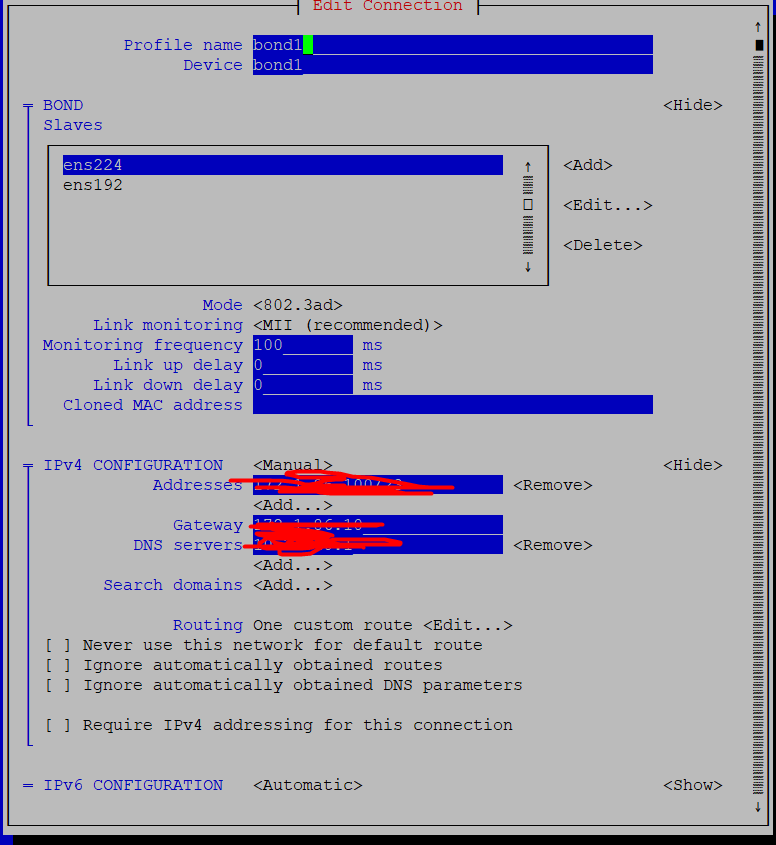NIC Teaming via NMTUI with mode 802.3AD
Hi Everyone,
Would like to ask if the setup of this is correct as this was configured only using the nmtui. As checked it seems like that the traffic only flows on one of the ethernet ports. however the mode is already 802.3 AD The expected output is that the expected traffic will flow both on the 2 slaves. For your guys help or recommendation.
cat /proc/net/bonding/bond1
Ethernet Channel Bonding Driver: v3.7.1 (April 27, 2011)
Bonding Mode: IEEE 802.3ad Dynamic link aggregation
Transmit Hash Policy: layer2 (0)
MII Status: up
MII Polling Interval (ms): 100
Up Delay (ms): 0
Down Delay (ms): 0
Peer Notification Delay (ms): 0
802.3ad info
LACP active: on
LACP rate: slow
Min links: 0
Aggregator selection policy (ad_select): stable
System priority: 65535
System MAC address: 00:0c:29:71:8f:d6
Active Aggregator Info:
Aggregator ID: 1
Number of ports: 1
Actor Key: 15
Partner Key: 15
Partner Mac Address: 00:0c:29:92:7f:3b
Slave Interface: ens192
MII Status: up
Speed: 10000 Mbps
Duplex: full
Link Failure Count: 0
Permanent HW addr: 00:0c:29:71:8f:d6
Slave queue ID: 0
Aggregator ID: 1
Actor Churn State: none
Partner Churn State: none
Actor Churned Count: 0
Partner Churned Count: 0
details actor lacp pdu:
system priority: 65535
system mac address: 00:0c:29:71:8f:d6
port key: 15
port priority: 255
port number: 1
port state: 61
details partner lacp pdu:
system priority: 65535
system mac address: 00:0c:29:92:7f:3b
oper key: 15
port priority: 255
port number: 1
port state: 61
Slave Interface: ens224
MII Status: up
Speed: 10000 Mbps
Duplex: full
Link Failure Count: 0
Permanent HW addr: 00:0c:29:71:8f:e0
Slave queue ID: 0
Aggregator ID: 2
Actor Churn State: churned
Partner Churn State: churned
Actor Churned Count: 1
Partner Churned Count: 1
details actor lacp pdu:
system priority: 65535
system mac address: 00:0c:29:71:8f:d6
port key: 15
port priority: 255
port number: 2
port state: 69
details partner lacp pdu:
system priority: 65535
system mac address: 00:00:00:00:00:00
oper key: 1
port priority: 255
port number: 1
port state: 1



